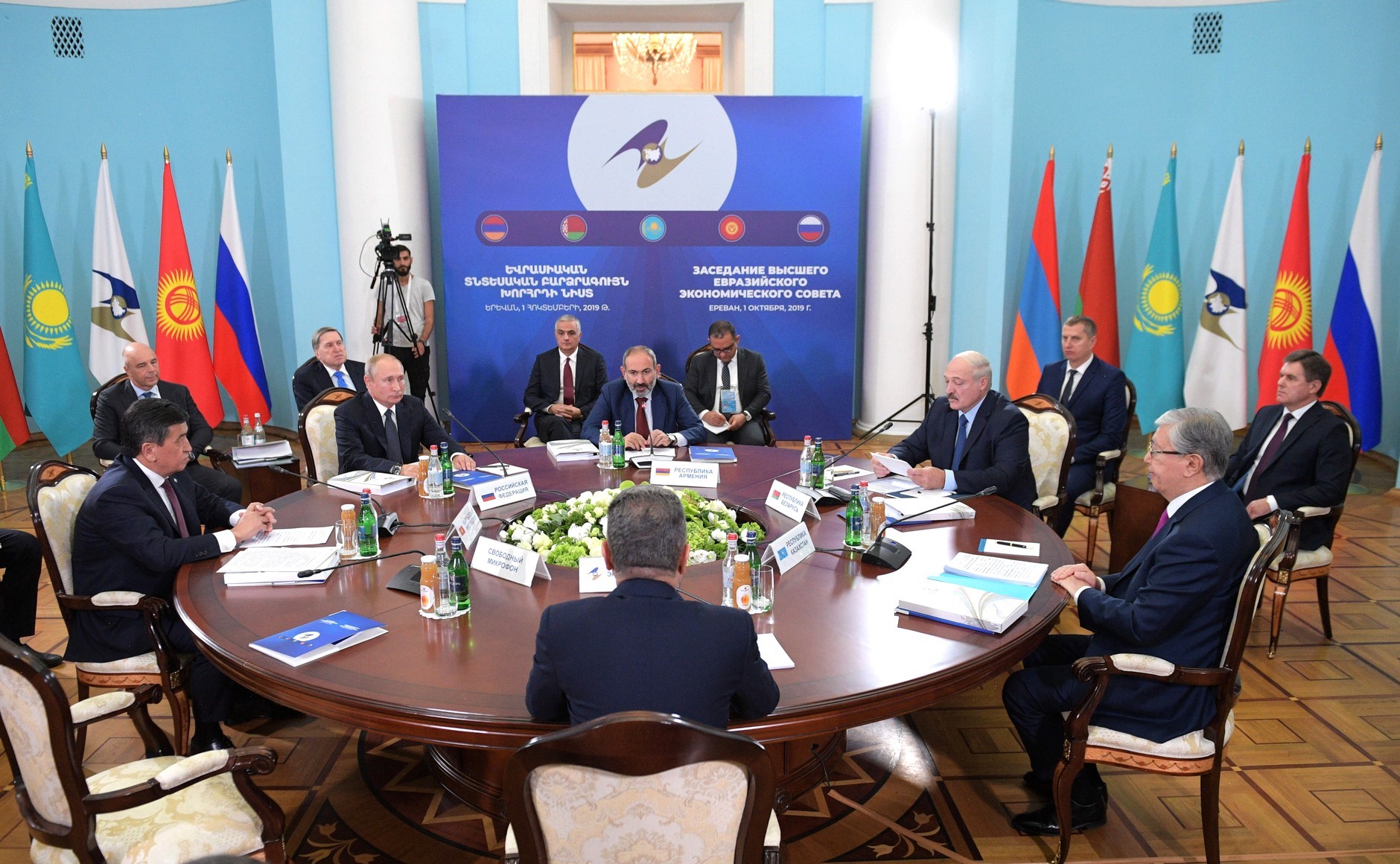RUSSIA MONITOR
Date: 21 October 2019
“Post-Soviet” EU Serves Russian Interests
The Eurasian Economic Community, known as EAEC, was poised to become somewhat a response to the European Union, or a free-trade institution in the post-Soviet region. The past four years have seen an increase in the trade exchange between EAEC member countries, far higher than before launching the organization. Even though it remains on a relatively low level, unable to depict progressive economic integration. The community’s goal is first and foremost to serve Russian economic expansion.

The Eurasian Economic Union was established in 2015 as a body bringing together Russia, Armenia, Belarus, Kazakhstan, and Kyrgyzstan. Back in 2000, their total trade exchange amounted to $14.1 billion, of which $13.9 billion, or 98.6 percent, stood for Russia’s trade with the remaining four. These figures rose steadily, reaching the value of $73.1 billion in 2012, before slumping in the aftermath of Western sanctions imposed over Russia’s annexation of Crimea, along with the decline of crude oil price. Establishing the Eurasian Economic Community was poised to become Moscow’s response to the problems while halting the further drop and facilitating the Russian entry into the neighboring markets. EAEC members do not set import duties on each other’s goods, while those coming from outside the community are subject to taxation at the same rates.
Support Us
If content prepared by Warsaw Institute team is useful for you, please support our actions. Donations from private persons are necessary for the continuation of our mission.
A report by the International Monetary Fund (IMF) found that, as of 2018, trade with Russia accounted for 96.9 percent of all trade within the Eurasian Union. Trade among the four smaller countries accounted for the remaining 3.1 percent. With its dominating trade within the EAEU, Russia is yet least reliant on the bloc in terms of foreign trade. In 2000, Russia’s share in trade with Armenia, Belarus, Kazakhstan, and Kyrgyzstan stood at 10 percent, contrary to only 8 percent in 2018. The Russia-led Eurasian Economic Community is not a traditional customs union. Flows of capital and labor from and to the smaller EAEU states are mostly concentrated around Russia. The smaller post-Soviet countries would seek to intensify cooperation with the Community’s biggest economy rather than expand trade with each other. The EAEC resembles a peculiar, concentric network with centrally located Russia holding strong ties to the remaining four countries that are yet linked one with another through fragile connections.
The Eurasian Economic Community summit was held in Yerevan, Armenia, on October 1. Included in the agenda was the passing of the organization’s budget for 2020 and signing a free trade agreement with Singapore. The Belarusian and Kazakh leaders urged other EAEC countries to remove trade barriers within the bloc. The need to remove the obstacles in trade was also confirmed by the Russian President Vladimir Putin, who mentioned the introduction of union-wide financial regulations among his priorities. The next step will consist in creating the common market of gas, oil, and oil products by 2025. But the Eurasian Economic Community may soon see another, albeit non-post-Soviet, country entering the bloc. As early as in October 2019, Serbia is set to ink a deal to join the customs union under the Economic Eurasian Community. Serbian President Aleksandar Vucic said that the process of Serbia’s EU integration should not bar the country from becoming a member of the EAEC. Serbia’s joining the bloc may become fact in early 2020, possibly with Moldova, which currently holds the status of an observer state, following suit.
All texts published by the Warsaw Institute Foundation may be disseminated on the condition that their origin is credited. Images may not be used without permission.














